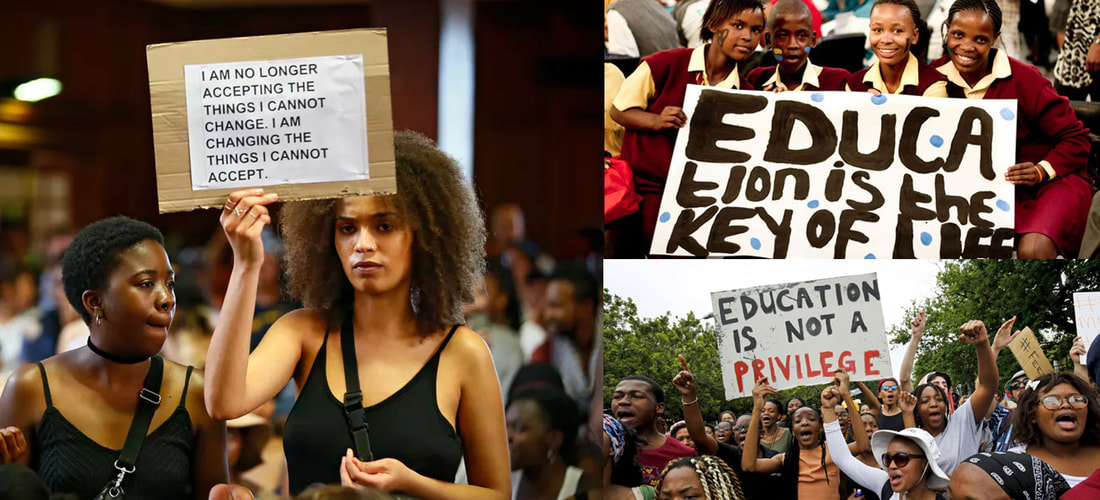|
Standing in the halls of the first floor of a private school in Cape Town, I peer out of a classroom window: a leafy suburb below, and an informal settlement in the distance. The contrast of a town of tin shimmering in the morning sun and the cold colonial, wooden-floored, high-ceilinged school feels jarring. I wonder, if the present education system were originally established to prepare the youth for a world of work, what does it mean then for a seemingly static industry in an ever-changing world? How are children in South Africa being prepared for the current and future work environment, with a largely unmoving education? Take note If we take education to be a process through which children are equipped with the skills necessary to operate in the world into which they are born, grow and contribute, we can see knowledge as the tools with which they do so. It’s said that the education system is in crisis. While this may sound bleak, it’s an opportunity to change; crises propel evolution forward. By definition, a crisis is when a system no longer functions as intended and so new thinking is required to create and implement relevant solutions. This includes reframing and reorganising existing policies and problems. Order keeps the system together, disorder allows for change, and being on the edge of chaos results in complex behaviour. Our challenge is to shift our knowledge in a way that keeps it relevant to our changing environment. Lesson 1: Shift from adaptation to agility Dr Lize Barclay, University of Stellenbosch senior lecturer in futures studies & systems thinking, describes the changing education landscape as being influenced by the shift from the fourth to the fifth industrial revolution, and that Africa is lagging behind. As a result, African youth largely lack the necessary skills to adapt and prepare for various future possibilities in the world of work. In a time when the world is grappling with dissonance, disorientation, polarisation and more, “Africa is potentially well-positioned to navigate these profoundly different futures”. The question to ask then is: How is your business preparing the youth for the future of work, and equipping them with the skills to survive in your organisation? The revolution devours its children — Jacques Mallet du Pan, journalist Lesson 2: Shift from resilience to antifragility Ideally, an organisation — as a system — should be antifragile. Nassim Nicholas Taleb, in his book Antifragile, categorises systems into three categories: fragile, robust and antifragile. His interest lies in the latter — that which benefits from disorder, volatility, and turmoil; that which is also measurable, unlike something like risk. What makes antifragility particularly interesting is that it appears to be immune to ‘prediction errors’ and ‘black swan’ events. Resilience refers to a system’s ability to absorb disturbances, to reorganise when it is undergoing change, and to retain some structure, function, identity and feedbacks. Fragility then refers to that which is destroyed in a state of change or chaos. Whether systems are receptive, resilient or resistant to change, if a system is in need of transformation, it should act when defiance is low. The question to ask then is: How does your organisation respond to change? She was not fragile like a flower; she was fragile like a bomb — Unknown Lesson 3: Shift from strategy to systems thinking To have a systems-thinking mindset is to see the world, frame problems, and design interventions in critical and practical ways. Systems thinker and sociologist, Leyla Acaroglu, identifies six core concepts that shape this mindset:
The question to ask then is: How would you define your organisation, as a living system? Simplicity is complexity resolved — Constantin Brâncuși, artist This article was published on Marklives
0 Comments
Leave a Reply. |
MARGUERITE COETZEE
ANTHROPOLOGIST | ARTIST | FUTURIST CATEGORIES
All
|

 RSS Feed
RSS Feed
